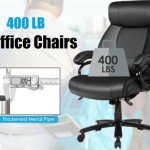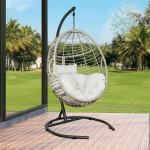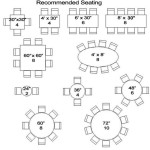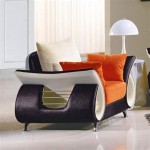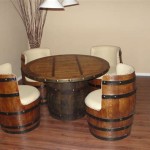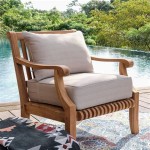The Appeal and Practicality of Wall Hugger Narrow Recliner Chairs
In the realm of furniture design, the efficient use of space is a paramount consideration, particularly in smaller living areas. Wall hugger narrow recliner chairs represent a significant advancement in this area, combining the comfort and relaxation associated with recliners with a design that minimizes spatial footprint. These chairs are engineered to recline forward rather than backward, allowing them to be placed close to a wall without requiring significant clearance. This feature distinguishes them from traditional recliners and makes them a practical choice for apartments, condominiums, and any room where space is at a premium.
The functionality of a wall hugger narrow recliner chair extends beyond its space-saving design. These chairs are often equipped with features that enhance comfort and convenience, such as power recline mechanisms, integrated massage functions, and built-in storage compartments. The narrow design also allows for easier integration into various room layouts, ensuring that the chair complements the existing furniture and decor without overwhelming the space.
The construction of these chairs often involves durable materials and robust engineering to withstand regular use. Manufacturers typically use high-quality fabrics, such as microfiber, leather, or performance-grade synthetics, to ensure both aesthetic appeal and long-term durability. The frame is typically constructed from hardwood or reinforced steel to provide a stable and reliable foundation. Careful attention is given to the upholstery and cushioning to provide optimal support and comfort during prolonged use. The end result is a piece of furniture that is both functional and aesthetically pleasing, offering a practical seating solution for individuals seeking comfort without compromising space.
Space Optimization and Placement Strategies
The primary advantage of wall hugger narrow recliner chairs lies in their ability to maximize space utilization. Traditional recliners require a substantial amount of clearance behind the chair to allow for full recline. This can be a significant constraint in smaller rooms, often forcing homeowners to compromise on furniture placement or opt for less comfortable seating options. Wall hugger recliners, on the other hand, eliminate this constraint by reclining forward. This design allows the chair to be positioned just a few inches away from the wall, freeing up valuable floor space and improving the overall flow of the room.
Strategic placement of a wall hugger narrow recliner can dramatically alter the usability of a room. In a small living room, positioning the chair next to a bookshelf or entertainment center can create a designated reading nook or relaxation area without sacrificing valuable floor space. In a bedroom, the chair can be placed near a window to create a comfortable spot for reading or enjoying the view. The compact design of the chair also makes it suitable for placement in corners, awkward alcoves, or other areas that are difficult to furnish with traditional furniture.
Furthermore, the narrow profile of these recliners facilitates integration into multi-functional spaces. In a home office, a wall hugger narrow recliner can provide a comfortable and relaxing seating option without encroaching on the workspace. This allows individuals to take breaks from work without leaving the room, promoting both productivity and well-being. In a guest room, the chair can serve as a comfortable seating option during the day and a relaxing place to unwind in the evening, providing guests with a versatile and comfortable space.
When considering the placement of a wall hugger narrow recliner, it is essential to consider the overall layout of the room and the intended use of the chair. Factors such as natural light, proximity to electrical outlets, and the visual flow of the room should be taken into account to ensure optimal placement. Proper placement can not only maximize space utilization but also enhance the functionality and aesthetic appeal of the room.
Ergonomic Design and Health Benefits
Beyond their space-saving design, wall hugger narrow recliner chairs are often designed with ergonomics in mind. These chairs typically feature contoured seats, adjustable lumbar support, and padded armrests to promote proper posture and reduce strain on the back, neck, and shoulders. The reclining function allows users to adjust the chair to a comfortable angle, reducing pressure on the spine and promoting relaxation. Some models even incorporate features such as heat and massage functions, providing additional therapeutic benefits.
The ergonomic design of these chairs can be particularly beneficial for individuals with back pain, arthritis, or other musculoskeletal conditions. The ability to recline and elevate the legs can help to reduce pressure on the lower back and improve circulation. The adjustable lumbar support can provide targeted support to the lower back, promoting proper spinal alignment and reducing muscle strain. The heat and massage functions can help to soothe sore muscles and reduce inflammation.
Furthermore, the reclining function can promote relaxation and reduce stress. By elevating the legs and reclining the back, users can reduce the strain on their cardiovascular system and promote a sense of calmness and well-being. This can be particularly beneficial for individuals who spend long hours sitting or standing, as it can help to alleviate fatigue and prevent the development of musculoskeletal problems. The availability of power recline options further enhances the ease of use, allowing adjustments with minimal effort.
When selecting a wall hugger narrow recliner chair, it is important to consider the ergonomic features that are most important to your individual needs. Look for chairs with adjustable lumbar support, contoured seats, and padded armrests. Consider models with heat and massage functions if you are seeking additional therapeutic benefits. It is also important to try out the chair before purchasing it to ensure that it is comfortable and provides adequate support.
Material Selection and Durability Considerations
The materials used in the construction of a wall hugger narrow recliner chair play a significant role in its overall durability, comfort, and aesthetic appeal. The frame is typically constructed from hardwood or reinforced steel to provide a stable and reliable foundation. Hardwood frames are known for their strength and durability, while steel frames offer excellent support and resistance to bending or breaking. The choice of frame material will depend on the intended use of the chair and the desired level of durability.
The upholstery material is another important consideration. Common upholstery options include microfiber, leather, and performance-grade synthetics. Microfiber is a synthetic fabric that is known for its softness, durability, and stain resistance. It is a popular choice for families with children and pets. Leather is a natural material that is known for its luxurious feel, durability, and timeless appeal. It is a more expensive option than microfiber but offers a premium look and feel. Performance-grade synthetics are designed to withstand heavy use and resist stains, fading, and wear. They are a good choice for high-traffic areas or for individuals who are concerned about durability.
The cushioning material also plays a crucial role in the overall comfort of the chair. Common cushioning options include foam, fiberfill, and gel. Foam is a versatile material that provides good support and cushioning. Fiberfill is a soft and plush material that provides excellent comfort. Gel is a newer material that conforms to the body and provides excellent pressure relief. The choice of cushioning material will depend on your personal preferences and the desired level of comfort.
When selecting a wall hugger narrow recliner chair, it is important to consider the materials used in its construction and to choose materials that are appropriate for your needs and lifestyle. Look for chairs with durable frames, high-quality upholstery, and comfortable cushioning. Consider the ease of maintenance and cleaning when making your selection. With proper care and maintenance, a well-constructed wall hugger narrow recliner chair can provide years of comfortable and reliable use.
Additionally, the quality of the stitching and the hardware used in the chair's construction can significantly impact its overall durability. Reinforced stitching and heavy-duty hardware can help to prevent seams from splitting and components from breaking. Inspecting these details before purchasing a chair can provide valuable insight into its long-term performance.
Ultimately, the choice of a wall hugger narrow recliner chair involves careful consideration of space constraints, ergonomic needs, and material preferences. By evaluating these factors, individuals can select a chair that provides both comfort and practicality, enhancing their living space without compromising on functionality.

Wingback Wall Hugger Recliner

A Wall Hugger Rise Recliner Is Perfect For Small Rooms

Bradington Young Davidson Wall Hugger Recliner Deutsch Furniture Gallery

Prolounger Wall Hugger Recliner In Gray Microfiber A157452 The Home

10 Recliners For Small Spaces 2024 Best Cozy Compact Chairs

Homcom Electric Power Wall Hugger Recliner Chair Armchair Sofa With Linen Upholstered Seat And Retractable Footrest Blue Aosom Com

Homesvale Wall Hugger Recliner Chair Khaki Microfiber Walmart Com

Wall Hugger Recliner Chair From Dutchcrafters Amish Furniture

Furniture That Saves Space The Wall Hugger Recliner Timber To Table

What Is A Wall Hugger Recliner La Z Boy Southeast
